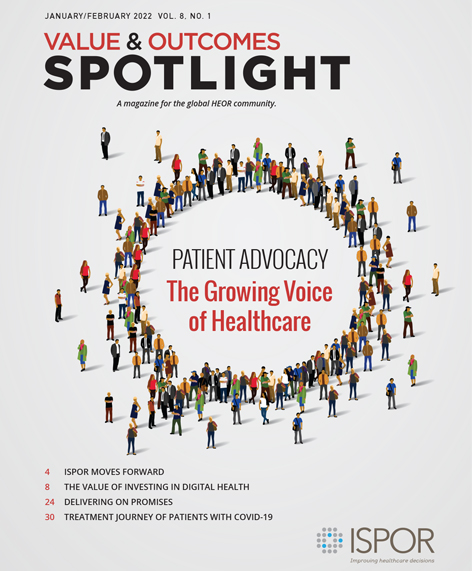Research Roundup
Section Editor: Aakash Bipin Gandhi, BPharm, PhD, Research Scientist, Real World Investigator, Sanofi, Baltimore, MD, USA
Patient-centered drug approval: the role of patient advocacy in the drug approval process
Mattingly TJ, Simoni-Wastila L. Patient-centered drug approval: the role of patient advocacy in the drug approval process.
J Manag Care Spec Pharm. 23(10):1078-1082.
https://pubmed.ncbi.nlm.nih.gov/28944732/
Summary
This article sheds light on the evolution of the drug approval process to include a significant focus on the patient voice as opposed to only relying strongly on evidence generated through randomized controlled trials. The article underscores the need
for a patient-centered approach to drug approval, especially in the case of rare diseases such as Duchenne muscular dystrophy, where it may not be possible to recruit enough participants to conduct a randomized controlled trial that is sufficiently powered to yield robust statistical inference. Overall, the article discusses the intended and potential unintended consequences of adopting a patient-centered approach to support the drug approval process.
Relevance
Incorporating the patient voice has implications for several stakeholders involved in the drug approval process. With regards to rare diseases, pharmaceutical manufacturers may have insufficient evidence to support the efficacy and safety of a drug, regulatory agencies can leverage information from patient advocacy groups to aid decision making. As a consequence of having a small patient population associated with a rare disease, pharmaceutical manufacturers are unable to conduct large clinical trials to meet to regulatory requirements for drug approval. As in the case of Duchenne muscular dystrophy, inclusion of the patient voice can help manufacturers overcome hurdles associated with market entry through accelerated approval pathways provided by regulatory agencies. Importantly, for diseases with few therapeutic options, using a patient-centered approach to support drug approvals can help improve patient’s accessibility to novel treatments.
However, including the patient voice during the drug approval process may result in certain unintended consequences. For example, terminally ill patients may advocate for the approval of a novel treatment associated with insufficient safety and efficacy information. Consequently, these high-cost drugs may drive up insurance premiums and increase the cost-sharing burden among insurance plan members that may not have the disease of interest. In conclusion, an appropriate balance may need to be struck between regulatory agencies that incorporate the patient voice to help expedite the drug approval process and a patient’s willingness to accept risk associated with the use of a drug despite limited evidence.
Enhancing the incorporation of the patient’s voice in drug development and evaluation
Chalasani M, Vaidya P, Mullin T. Enhancing the incorporation of the patient’s voice in drug development and evaluation.
Res Involv Engagem. 2018;4(1):1-6.
Summary
The present article discusses the Patient-Focused Drug Development (PFDD) program initiated by the US Food and Drug Administration (FDA) in 2012 with the objective of collecting patient perspectives on diseases and associated treatments. As a part of the PFDD initiative, the FDA organizes public meetings that focus on engaging patients to discuss the most serious symptoms associated with their disease as well as treatment options they may pursue for their condition. These meetings may be tailored depending on the disease discussed, available therapeutic options for treating a condition, specific patient needs, or items the FDA review division may seek more information on. The PFDD meetings can include participation from patients, caregivers, or patient representatives. In summary, the FDA-driven PFDD meetings highlight the organization’s priority in helping plug information gaps related to the incorporation of patient perspectives during the drug development process.
Relevance
The article underscores the need for patient involvement during the drug development process especially because patients can best describe their experience with a disease and related therapeutic treatments. Hence, they are best positioned to inform regulatory agencies and healthcare decision makers on their preferences for care. Conversely, the meetings also help the FDA understand the burden of an illness on a patient and their caregivers and the risk–benefit perception that patients have towards available treatments. This information can in turn help the FDA with decision making related to approval of products for marketing and better advise pharmaceutical manufacturers on their drug development processes.
Warner K, See W, Haerry D, Klingmann I, Hunter A, May M. EUPATI guidance for patient involvement in medicines research and development (R&D); guidance for pharmaceutical industry-led medicines R&D.
Front Med. 2018;(5):270.
Summary
This article discusses the guidance documents prepared by the European Patients’ Academy on Therapeutic Innovation (EUPATI) on following structured steps to help incorporate the patient voice in the drug development process. The documents developed by EUPATI were based on a series of internal and external consultations with various stakeholders involved in the drug development process. They include guidance on patient involvement during the research and development phase conducted by pharmaceutical companies, approval discussions by regulatory agencies, and product-related health technology assessments.
Relevance
The article stresses the need for structured rules and steps for patient involvement in the drug development process in order to obtain effective results for all stakeholders involved. Adopting this approach can help increase transparency, trust, and respect between patients and stakeholders including pharmaceutical companies and regulatory agencies. Importantly, it would provide a systematic approach towards ensuring that patient-related unmet needs, research priorities, and preferred clinical endpoints are considered during the drug development process.
Note from the Section Editor: Views, thoughts, and opinions expressed in this section are my own and not those of any organization, committee, group, or individual that I am affiliated with.

